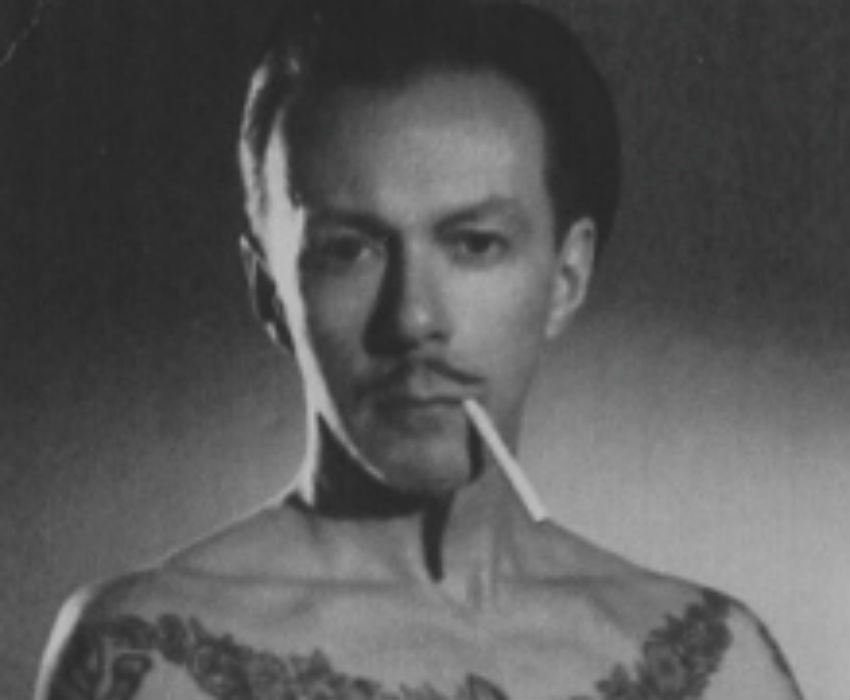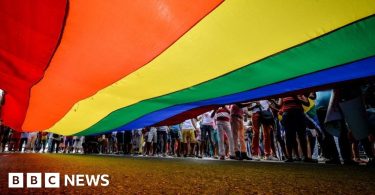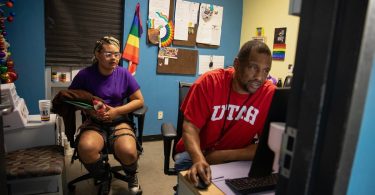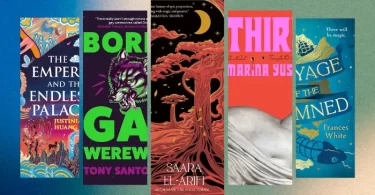The LGBTI community has a long and varied history with tattoos.
In a time when it was illegal to be out and proud in Western culture, many LGBTI people got tattoos to convey secret messages or as an act of defiance to authority.
These days, tattoos and LGBTI culture go hand in hand and it’s a trend that’s on the rise.
But where did it all begin and what do these hidden meanings signify?
‘Bad Boys and Tough Tattoos’
According to famous gay tattooist Samuel Steward (also known as Phil Sparrow), the gay community in particular really began embracing tattoos in the 1950s.
Steward was born in 1909 and led many varied roles in life, including a professor at a Roman Catholic university and an author of gay pulp fiction.
He was also the official tattoo artist for the motorcycle club, the Hells Angels in Oakland, California.
Steward published his thoughts on gay men getting tattoos in his 1990 book Bad Boys & Tough Tattoos: A Social History of the Tattoo with Gangs, Sailors, and Street-Corner Punks.
Samuel Steward. | Photo: Wikipedia
Steward said: ‘One change, however, came about in the homosexual attitude towards tattoos around 1954.’
He continued: ‘Following the national release of the movie The Wild One with Marlon Brando; the original motorcycle film, it seemed to crystallize or release, the obscure and long-hidden feelings of many homosexuals.’
Steward believes tattoos became a symbol of masculinity for gay men, closely tied with the gay leather community.
He said: ‘I was overwhelmed by the sudden appearance of so many of these figures… as the impulse of many homosexuals to be considered more masculine – by the addition of a tattoo – grew stronger.’
There are also examples of lesbians in the 1940s and 50s literally wearing their sexuality on their sleeve by getting a particular tattoo (but more on that later).
Here are the most common LGBTI-inspired tattoos and what it means to the people who got them.
Note: If someone has one of these tattoos, it does not mean they automatically identify with the explanations below
1. Pink triangle tattoo
In Nazi Germany in the mid-1940s, gay prisoners in concentration camps were forced into wearing pink triangles as a badge of shame.
In fact, one scholar says these gay prisoners were the ‘lowest of the low’ in the hierarchy of the concentration camps.
Nazis tortured the gay prisoners by castrating some of them and sodomizing them with items like broomsticks. They also performed dangerous experiments on them to find cures for typhus fever and homosexuality.
According to estimations, between 5,000 and 15,000 gay people died in German concentration camps.
When eye witness accounts and personal testimonies emerged several decades later, LGBTI activists began reclaiming the symbol.
The earliest accounts in America date back to 1977, where LGBTI activists in Miami pinned pink triangles to their clothes to protest housing discrimination.
In the early 80s, organization ACT-UP used the pink triangle to try to raise awareness in the midst of the AIDS crisis.
Instead of using the upside down triangle – as the Nazis did – activist Avram Finkelstein came up with using it the right way up.
The organization used it in arguably its most famous campaign poster: Silence = Death.

Photo: Elvert Barnes Photography
Since then, activists have used the symbol in various campaigns since, including in protests last year over concentration camps in Chechnya.
The symbol went from being a badge of shame, to a symbol of pride.
How LGBTI people reclaimed the pink triangle
Many LGBTI people now proudly show off their tattoo pink triangles.
‘I got it after the Pulse nightclub shooting in Florida,’ Nick McGlynn told Gay Star News. ‘At the time, it really brought home the physical violence that’s still directed at queer people.
‘I was angry and I wanted to have my queerness permanently written on my body as a “fuck you” to the fear of being visibly queer in public,’ he said.

Nick McGlynn’s pink triangle tattoo. | Photo: supplied
McGlynn is a teacher and says his pink triangle tattoo isn’t as obviously gay as a rainbow flag, so his students often ask him about it.
‘It gives me an opportunity to say out loud in public that I’m a gay man,’ he said.
Greg Baillie got his pink triangle tattoo on his wrist so he can hide it under his watch if he ever feels unsafe.
He said: ‘I got it to feel like part of a community whilst remembering the horror that had befitted some that had went before.
Jeff Ingold wanted to make his triangle tattoo special so he got a triangle outline, with the date he came out in the middle.
He said: ‘I got this tattoo to remember all those who came before me, who fought and died for our rights and also, to place myself in that history.’

Jeff Ingold got a tattoo of the pink triangle with the date of his coming out. | jefflez7 / Instagram
Ingold continued: ‘Along with that, my dad once told me he wished I didn’t wear my sexuality on my sleeve so much.’
So he got it on his arm in defiance.
‘This is who I am, this is my history and I won’t be ashamed of showing it off,’ he added.
Bisexual people also have a version of the pink triangle with a blue triangle linked.
2. Nautical star tattoo
In the late 1940s and 50s, some lesbians got a nautical star tattooed on their wrist as a signal to other lesbians.
Madeline D. Davis and Elizabeth Lapovsky Kennedy’s 1993 book Boots of Leather, Slippers of Gold: The History of a Lesbian Community explains the phenomenon.
They explained: ‘The cultural push to be identified as lesbians – or at least different – all the time was so powerful that it generated a new form of identification among the tough bar lesbians: a star tattoo on the top of the wrist, which was usually covered by a watch.
‘This was the first symbol of community identity that did not rely on butch-fem imagery,’ they wrote.

Nautical star tattoo. | Photo: amanda / Flickr
Kennedy and Davis also said the local police in Buffalo, New York knew about the practise, so it was very risky.
Police had a list of names of known lesbians. For this reason, the tattoo was always on the wrist where it could hide behind a wristwatch.
The nautical star is now hugely popular among LGBTI people, including a lot of gay porn stars.
As well as being a common tattoo for sailors (it symbolizes sailors trying to find their way home), the nautical star also points to prostitution in some circles.
3. Scorpion/Biohazard tattoo
In 2011, CNN published a piece from a gay man who is HIV+.
In the piece, Michael Lee Howard says he got the biohazard symbol on his right arm and the radiation symbol on his left to indicate that he’s living with HIV.
After his diagnosis in 2005, Howard said he got the tattoos to help him on his journey of self-acceptance.
He said: ‘It’s a branding of who I am, and it’s a branding of being comfortable with that, being comfortable with who I am.’
Another tattoo listed in the article as a signifier for someone living with HIV is the scorpion. This one is more tricky because the scorpion tattoo is also closely associated with astrology.
Gay man William Conley said he also knows 45-60 others who got the biohazard and scorpion symbols tattooed on their body.
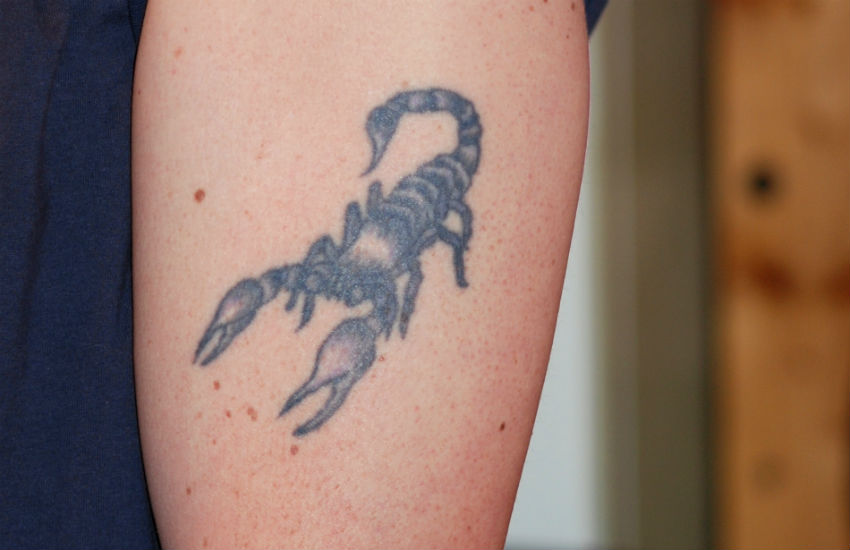
Scorpion tattoo. | Photo: Allen Watkin / Flickr
In response to the article, chief executive of GMFA Matthew Hodson warned it was only a small minority of gay men getting these tattoos.
He said: ‘The problem with any coded reference to HIV status is that it may not be universally understood, so even if you have a great big bio-hazard tattoo across your butt-cheeks, it doesn’t necessarily mean that everyone you have sex with is going to understand what it means.
‘Most people with HIV don’t tell all of their sexual partners.
‘And although some gay men choose to ink their status, fierce and unapologetic, on their skin, the majority of us don’t,’ he said.
4. Arm band tattoo
While some people might just like the look of arm band tattoos, others get them to let the world know they enjoy anal fisting.
Alexis Garcia told Gay Star News he got his double arm band tattoo ‘to stand for equality’.
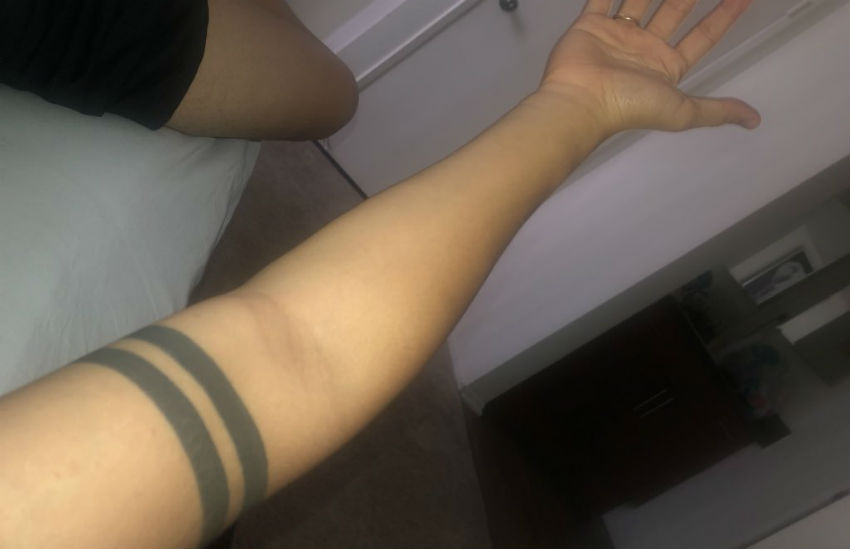
Alexis Garcia and his armband tattoo. | Photo: supplied
He had no idea about the double meaning behind the tattoo but said: ‘It’s important to me as it means equality.’
Kieran Evans said he also didn’t know about the double meaning until after he got it done. He has multiple bands on his arm to represent a member of his family.
He said: ‘When I walk into a room of gays wearing a short sleeved shirt, one of two things goes through my head; I’m either looking cute as hell or they think I like to get my hands dirty.’
He’s actually had gay men ask him about the double meaning before.
Evans said: ‘This one time at a hookup, the guy asked if I did porn. A few years later, I then realised why he asked because a lot of porn starts have band tattoos as well.’
Some people might also get this tattoo to symbolize the equals sign.
5. Eyes tattoo
Russian criminal tattoos have a long list of hidden meanings.
In Soviet Union prisons, there was a strong culture of tattoos being used to indicate a person’s criminal career and rank. It differentiated who were criminal elites and who were political prisoners.
The practice started around 1930, grew to prominence in the 50s and died down by the 80s.
Some prominent symbols include star tattoos (indicating authority), skull (indicating murder), cross (a traditional ‘thieves cross’) and bells (indicating a long sentence with no chance of early release).
But there are some gay symbols too, like the eyes tattoo. When tattooed on the lower stomach, it means the person is gay. The penis symbolizes a nose, with the two eyes above watching.
Most of the tattoos symbolizing being gay were forced onto people as a way to shame them.
For example, a snake entwined with a woman indicates a ‘passive homosexual’ – especially tattooed on the back.
Beauty marks beneath the eyes also indicate a ‘passive homosexual’, as well as red suits in cards (diamonds or hearts) on a prisoner’s back.
6. Equals sign tattoo
This one’s fairly self-explanatory but it’s worth mentioning.
The red equals sign rose to prominence in 2013 when the Human Rights Campaign used it to urge people to support marriage equality in the United States.
A sea of these equals signs flooded social media and effectively got the conversation flowing about LGBTI rights.
As a result, many people got little parallel line tattoos on their body to symbolize equality.

Sarah Eba and her equals sign tattoo. | Photo: supplied
Sarah Eba told Gay Star News: ‘I got it two years ago right after I came out to my grandma and she didn’t approve because she didn’t think equality for gays should be the same for straight people.
‘It pissed me off so I got the tattoo and showed her. But now I love it and it reminds me of who I am every time I see it,’ she said.
James Baker said he got his equals sign tattoo a few years back, but wanted the upside triangle too.
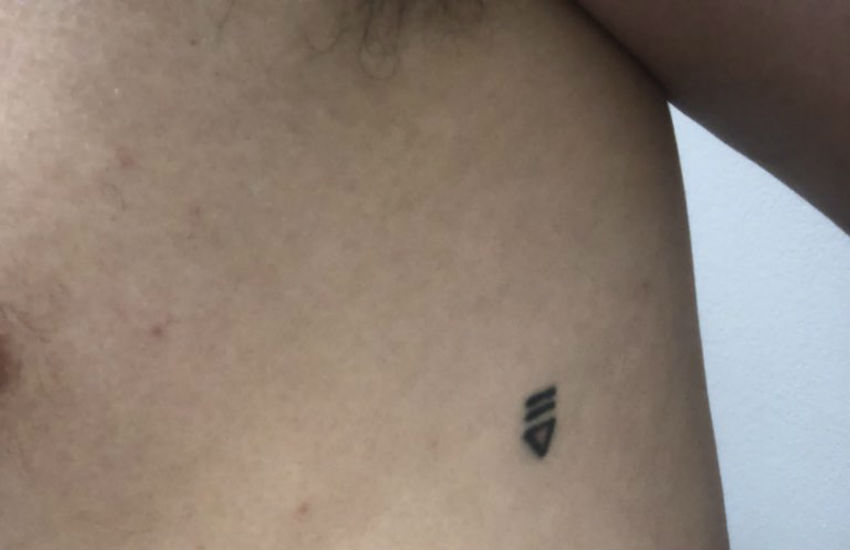
James Baker and his equals sign tattoo. | Photo: supplied
He explained: ‘I’m not someone who you would instantly recognise as LGBTI.
‘Going through university and now playing for a gay football team in London, I wanted to show that I was proud after not being confident when I was younger,’ he said.
7. Labrys (double-sided axe) tattoo
During the 1960s, lesbian feminists adopted the labrys tattoo as a symbol of strength and independence.
The labrys, or double-bladed battle axe, is associated with ancient matriarchal societies, the Amazons and the Greek goddess Demeter.
In the Minoan civilization (lasting from around 3,000 to 1,100 BCE), the society at the time was predominately matriarchal.
Their religion centered around a bare-breasted Great Goddess who is believed to have been a protector of women.
This goddess is often portrayed as holding snakes in her hands – a symbol of fertility and agriculture – and surrounded by female worshippers with double axes.
It represents a symbol of power.
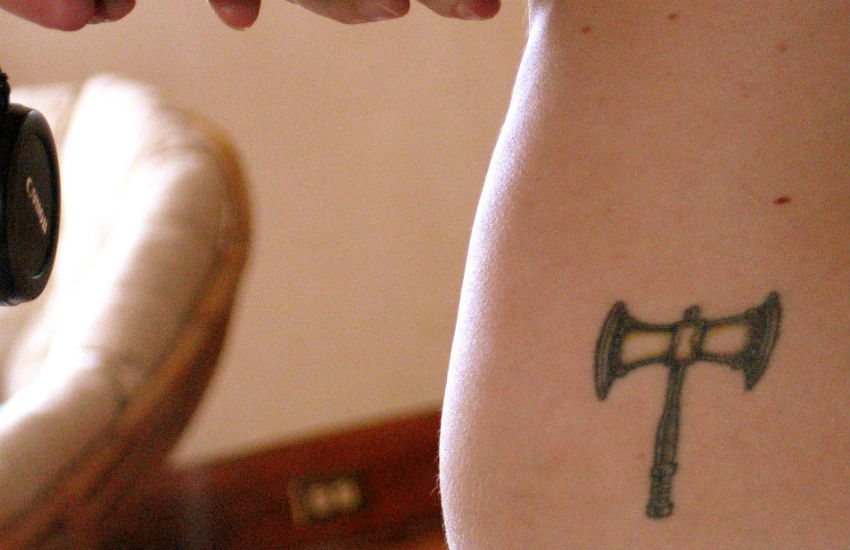
Photo: Donna Cymek / Flickr
The symbol sometimes appears against a violet background (a commonly acknowledged sapphic color) and in an upside down triangle.
In Kyrgyzstan, there’s even an LGBTI rights organization called Labrys.
Unfortunately some trans-exclusionary radical feminists (TERFs) have co-opted the symbol in recent years.
8. Lambda tattoo
Lambda is the 11th letter of the Greek alphabet.
The Gay Activist Alliance selected the symbol to represent the gay rights movement in 1970. There are many different interpretations of the symbol, including it standing for ‘liberation’. It’s also the physics symbol for energy.
Alan Meggs got his lambda tattoo in the early 90s at Frith St Tattoos in London.
He got it because he wanted ‘something less easily recognizable than the pink triangle so people would have to ask me about it.’
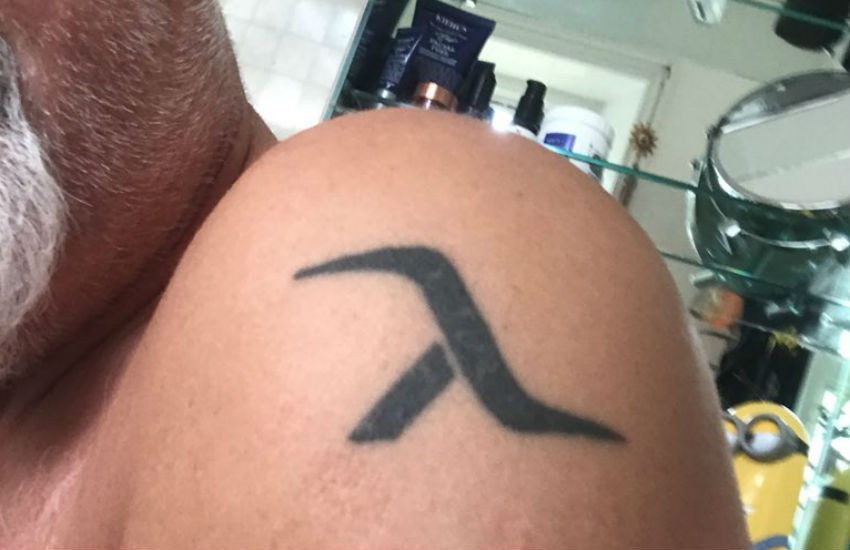
Alan Meggs and his lambda tattoo. | Photo: supplied
Meggs told Gay Star News: ‘It feels more political – less mainstream. My own little act of rebellion.
‘It reminds me of our past and the battles that have been won to be accepted into mainstream society. And reminds me we still have a fair way to go.
‘We should continue to walk in the footprints of the people who fought the laws and prejudices of the late 60s and early 70s and no be complacent. It’s part of my gay history,’ he said.
9. Circle tattoo
Some intersex people may proudly get a circle tattoo.
Organisation Intersex International (OII) Australia created the intersex pride flag in 2013. The yellow background and purple circle represent ‘hermaphrodite’ colors.
According to the website: ‘The circle is unbroken and unornamented, symbolizing wholeness and completeness.
‘We are still fighting for bodily autonomy and genital integrity, and this symbolizes the right to be who and how we want to be,’ the website states.
10. Whatever you want it to be!
LGBTI people can get a myriad of tattoos that represent their gender identity or sexuality.
James Stannah said he wanted something super gay so he got two Tom of Finland-inspired men kissing.
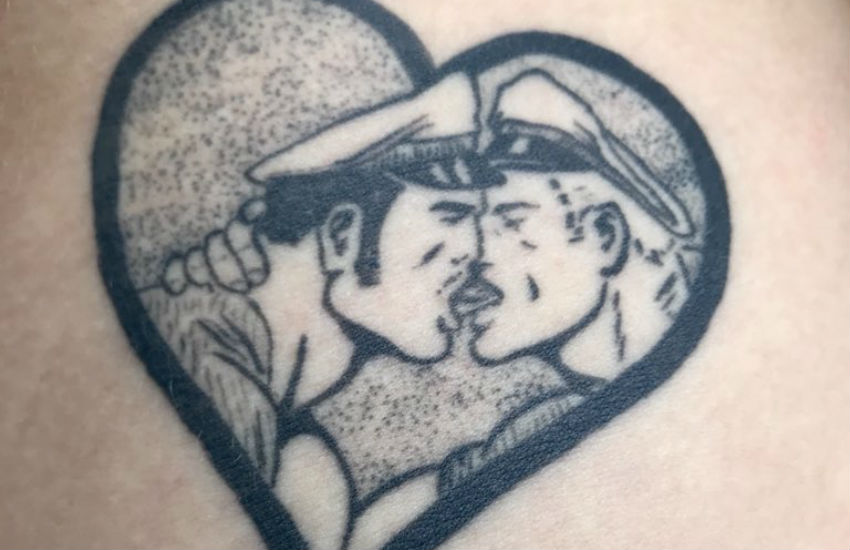
James Stannah and his Tom of Finland style tattoo. | Photo: supplied
He said: ‘I wanted something that was actually so obviously gay and a little shocking to look at.
‘[It] is such an open display of essentially how proud I am that I’m gay.
‘It’s also a bit of a fuck you. I basically am now restricted from taking my top off in quite a few countries worldwide for fear of arrest. But it’s also a bit of a middle finger to all of that as well,’ he said.
Candice Armah identifies as non-binary and saw a tattoo by artist Julim Rosa on social media with the word ‘gender’ in a distorted design.
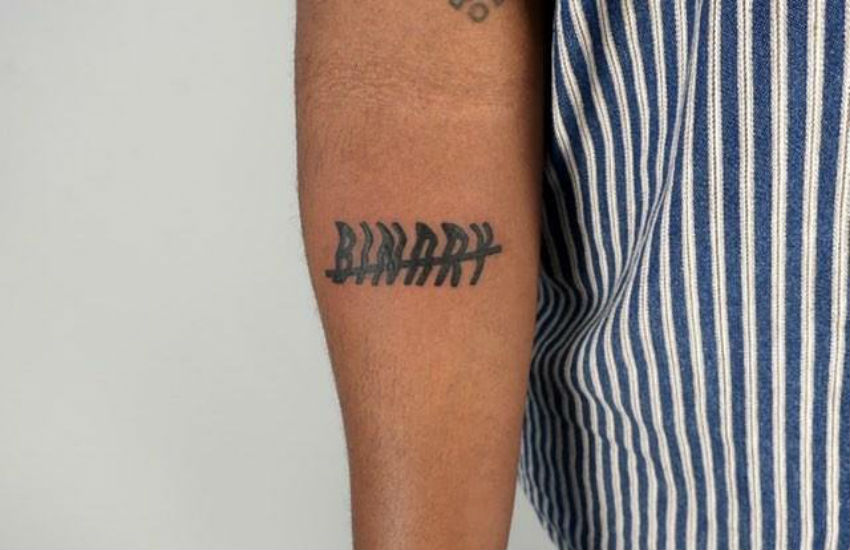
Candice Armah and their binary tattoo. | Photo: supplied
Armah explained: ‘Warped and wavy words seemed to fit how I felt and still feel about the gender binary. I wanted my own version to keep with me so asked her to draw some mock-ups.
‘I loved the result,’ they added.
Alexavier Taiga wanted something special as a nod to his trans identity. So he got a quote from Chris Colfer’s book Struck By Lighting.
The book is about a guy who wants to leave his conservative town.
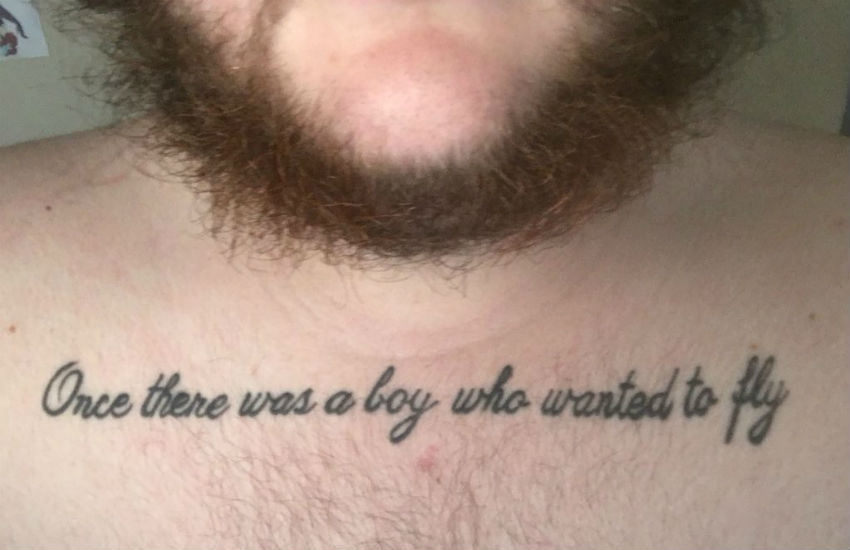
Alexavier Taiga and his tattoo. | Photo: supplied
Taiga said: ‘I love the quote because I come from a conservative small town. But it has extra meaning for me because I’m a trans guy.
‘I got the tattoo before coming out to anyone,’ he said.
He’s currently 12 months on testosterone and he’ll get the other half of the quote after his top surgery soon.
The second half of the quote is ‘Once there was a boy who flew’.

Erik Lulilian and his tattoo. | Photo: supplied
Erik Lulilian wanted to feature triangles and a bird to symbolize ‘freedom’ and as an homage to his queer identity.
He said: ‘I think tattoos in their own right are a kind of reclamation of our bodies.
‘So many queer people grew up in households [that] sent us messages that our bodies are not our own. It takes a lot of inner work to undo that mindset.
‘My tattoos, in that way, are an outward expression and celebration of my liberation,’ he said.

